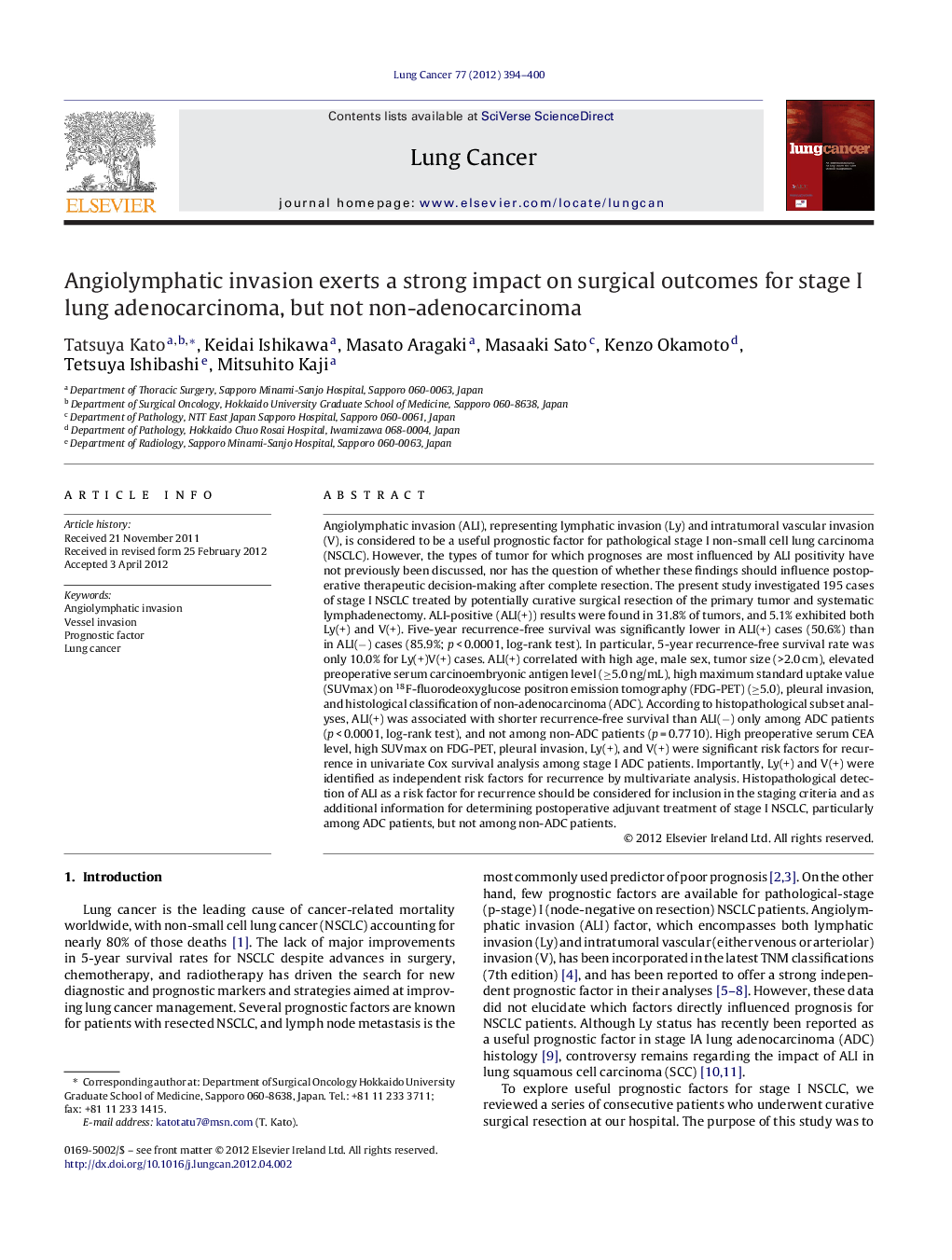| Article ID | Journal | Published Year | Pages | File Type |
|---|---|---|---|---|
| 2142098 | Lung Cancer | 2012 | 7 Pages |
Angiolymphatic invasion (ALI), representing lymphatic invasion (Ly) and intratumoral vascular invasion (V), is considered to be a useful prognostic factor for pathological stage I non-small cell lung carcinoma (NSCLC). However, the types of tumor for which prognoses are most influenced by ALI positivity have not previously been discussed, nor has the question of whether these findings should influence postoperative therapeutic decision-making after complete resection. The present study investigated 195 cases of stage I NSCLC treated by potentially curative surgical resection of the primary tumor and systematic lymphadenectomy. ALI-positive (ALI(+)) results were found in 31.8% of tumors, and 5.1% exhibited both Ly(+) and V(+). Five-year recurrence-free survival was significantly lower in ALI(+) cases (50.6%) than in ALI(−) cases (85.9%; p < 0.0001, log-rank test). In particular, 5-year recurrence-free survival rate was only 10.0% for Ly(+)V(+) cases. ALI(+) correlated with high age, male sex, tumor size (>2.0 cm), elevated preoperative serum carcinoembryonic antigen level (≥5.0 ng/mL), high maximum standard uptake value (SUVmax) on 18F-fluorodeoxyglucose positron emission tomography (FDG-PET) (≥5.0), pleural invasion, and histological classification of non-adenocarcinoma (ADC). According to histopathological subset analyses, ALI(+) was associated with shorter recurrence-free survival than ALI(−) only among ADC patients (p < 0.0001, log-rank test), and not among non-ADC patients (p = 0.7710). High preoperative serum CEA level, high SUVmax on FDG-PET, pleural invasion, Ly(+), and V(+) were significant risk factors for recurrence in univariate Cox survival analysis among stage I ADC patients. Importantly, Ly(+) and V(+) were identified as independent risk factors for recurrence by multivariate analysis. Histopathological detection of ALI as a risk factor for recurrence should be considered for inclusion in the staging criteria and as additional information for determining postoperative adjuvant treatment of stage I NSCLC, particularly among ADC patients, but not among non-ADC patients.
